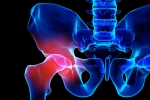Your hip joint is a ball and socket joint composed of a ball-shaped femoral head (the topmost part of your thighbone) fitting into a cup-like cavity called the acetabulum. Smooth articular cartilage covers the surfaces of these two bones, allowing them to glide smoothly against each other as you move.
So when any or both of the femoral head and the acetabulum are irregularly shaped, they may create friction from rubbing together and cause pain. This condition is called femoroacetabuluar impingement, and if left untreated, it can eventually limit your movement and causes hip stiffness and pain.
What is Femoroacetabular Impingement (FAI)?
Also called hip impingement, this is a hip condition wherein bone spurs form along one or both the femoral head and the acetabulum. The abnormal shape causes the top part of the thighbone to get pinched in the cup-like cavity when you move. And because they don’t fit together perfectly, the continuous friction and pinching over time can restrict your movements, limit your activities and even cause arthritis.
Types of Hip Impingement
There are two primary types of femoroacetabular impingement or hip impingement.
The first one, referred to as cam impingement, involves the deformity of the femoral head. In this condition, the supposedly ball-shaped part of the thighbone develops a more oval appearance. Rather than rotating smoothly inside the acetabulum, it grinds the smooth articular cartilage and creates friction with the cup-like cavity.
The second type, called pincer impingement, happens when the acetabular socket is excessively deep. Extra bone grows and extends the socket’s rim further, causing the neck of the thighbone to bump on it during movement.
With this said, it’s important to note that it is also possible to have cam and pincer impingement at the same time.
Causes of Hip Impingement
These deformities in the hip’s ball and socket joint may be present since birth or develop later on in life. It can also be caused by trauma to the hip or repeated motions related to work or other daily activities. Fortunately, some people who have FAI can lead active lives without experiencing any pain or discomfort.
However, athletes or physically active people usually experience hip impingement symptoms earlier than those not as active, mainly because they tend to work the hip joint more vigorously. And when these symptoms progress, FAI can lead to further hip joint damage and other complications.
Femoroacetabular Impingement Symptoms
The most common femoroacetabular impingement symptoms in individuals include:
- Pain in the groin or front of the thigh
- Stiffness in the hip
- Limping
Movements such as turning, twisting and squatting often cause a sharp pain. Bending the hip while sitting for long periods, riding a bike, or tying shoes may also worsen the pain and stiffness. Ultimately, occupational and sports activities can aggravate the symptoms and impact your performance.
Treatment for Femoroacetabular Impingement
If you have been diagnosed with hip impingement, you may be worried about the possibility of undergoing surgery. The good news is that orthopedic specialists usually explore conservative treatment options first to alleviate your pain and resolve the issue.
For example, you may be advised to change your daily activities and avoid those that cause or aggravate your symptoms. You may also be prescribed nonsteroidal anti-inflammatory medications like ibuprofen to reduce pain and inflammation. Finally, your doctor may also recommend that you undergo physical therapy sessions. Exercise routines designed specifically according to your condition can strengthen the muscles supporting your hip joint.
These interventions should reduce your pain and improve your strength and range of motion within eight weeks. However, if your condition does not improve, your doctor may recommend surgical treatment.
Arthroscopic Surgery and Open Surgical Dislocation for FAI
Surgical treatment for femoroacetabular impingement tackles two things: repairing or removing the damaged tissues in the hip joint and correcting the abnormally-shaped femoral head or acetabulum. The latter can be done through arthroscopic surgery, a minimally invasive procedure that involves small incisions. Here, the surgeon uses narrow instruments and a camera called an arthroscope to look inside the hip.
Most of the time, hip arthroscopy can resolve femoroacetabular impingement and repair labral tear and damaged articular cartilage as well. This may take about two hours, and patients can go home the same day.
However, some severe cases of hip impingement may require an open surgical dislocation involving larger incisions, approximately 7 to 10 inches. The ball will be temporarily dislocated from the socket, exposing all parts of the joint and allowing the surgeon to treat all deformities and labral tears. Open procedures often take a few hours, and patients have to stay in the hospital for several days to recover. As with most types of surgery, they can expect pain relief and improvements in movement within 4 to six months.
Treat Your Hip Impingement and Get Effective Pain Relief With the Help of Experts
Athletes and physically active individuals often experience femoroacetabular impingement symptoms because of their sports activities. Some may also experience FAI pain due to work-related repetitive motions. But whatever is causing your pain and discomfort, know that various treatment options are available to improve your condition, range of motion and performance.
Your doctor may first recommend conservative treatments like lifestyle changes, medications and physical therapy. If after these interventions, you still don’t find relief from this condition, you may consider undergoing surgery. Many FAI cases can be resolved through minimally invasive surgeries, but severe impingement may require open procedures.
If you are seeking relief from your femoroacetabular symptoms to get back in the court or return to work, it’s a good idea to consult expert hip arthroscopy surgeons, such as Dr. Benjamin Domb. As the inventor of cutting-edge techniques in hip arthroscopic surgeries, you can expect knowledgeable advice and world-class treatment.
Contact us today to schedule a virtual appointment or learn more about our minimally invasive joint surgery techniques. We’d love to help you get back on your feet!

